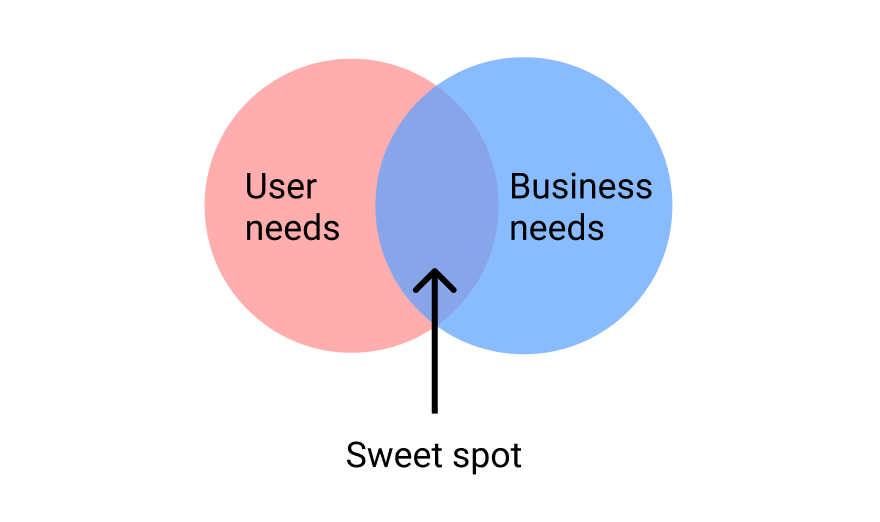 https://uxplanet.org/5-essential-properties-of-good-product-design-eb7808fee24f
https://uxplanet.org/5-essential-properties-of-good-product-design-eb7808fee24f
How can you tell the difference between good design and bad design? Good design starts with a good understanding of users. Dieter Rams perfectly summarized this idea:
You cannot understand good design if you do not understand people. Design is made for people.
But are there specific user needs that product designers should consider to increase the chances of creating a good design? Yes. And in fact, Aarron Walter did a great job summarizing the user needs and creating a hierarchy of user needs. In this article, I want to suggest a slightly different pyramid of user needs and discuss each layer in it.

Pyramid of user needs. The most fundamental needs are at the bottom of the pyramid. Image by Nick Babich
1. Utility
Utility is a foundation of user needs. When we evaluate a product, the first thing that we consider is whether the product satisfies our needs. The fundamental question is:
Does it solve my problem?
If the product does not solve the problem, it is not valuable for us, and we do not have any motivation to use it, no matter how reliable or usable it is. While this point seems obvious, too often, product designers forget about it. It often leads to negative outcomes — when product teams invest a lot of time and effort in building something that nobody wants to use.
A beautiful but not functional product won’t satisfy users’ basic needs.
When it comes to creating a new product, it’s essential to start with your target audience’s needs. Explore your users’ needs, prioritize key functionality, and ensure that people are willing to pay for the solution to their problems.

Product designers should always find a sweet spot between user needs and business needs.
2. Reliability
It’s not enough for a product to work sometimes; your product should consistently perform well for your users. Reliability builds trust and improves user engagement. Users should not face any unexpected system crashes or glitches because any unexpected problem that users face as they interact with your product will make them doubt whether they can rely on your product in the long term.
3. Usability
Usability is a quality attribute that assesses how easy products are to use. A user experience design aims to find and remove all barriers that prevent efficient human-computer interactions. The product you design should be easy to learn and easy to use. It usually happens when product designers prioritize information according to user needs, consider the context of usage (user environment), and use conventional design patterns that help good discoverability and learnability.

Nielsen usability model. Image by Researchgate
4. Pleasurability
In a highly competitive market, it is no longer enough to design a product that meets the utility and usability criteria. It’s crucial to design a pleasurable experience. Pleasurable products make users feel a sense of delight. Delight refers to any positive emotional response that users receive from interacting with a product.
Positive emotional stimuli can build a sense of trust.
What is the first thing that comes to your mind when you hear the word ‘delight’? You will probably imagine a well-crafted UI design full of crisp illustrations, fine typography, and carefully choreographed animated effects. But this is only a fraction of what delight really is. It’s important to understand that there are two types of delight — surface delight and deep delight.
Surface delight is an aesthetically-pleasing design. Delightful details such as well-designed animated effects and carefully-selected imagery can make people feel good about interaction, especially when they are nicely baked in the context of interaction.

Colorful onboarding of Natural AI. Image by Gleb Kuznetsov✈
Generative interface Natural AI by Gleb Kuznetsov✈
Surface delight plays a vital role in UX because:
- It helps you differentiate your product from the other products in your niche.
- Aesthetic-usability effect states that users believe that beautiful products are more usable.
Deep delight, on the other hand, is a type of delight that people have when they immerse in interaction with a product. This type of delight puts users into the state of flow and let them make the most from using a product. Typically, deep delight is a synergy of utility, reliability and usability, and it happens when designers know exactly what users will need at each step of their user journey.
Delight is located at the top of a pyramid, and it means that it’s possible to achieve a delight only when all previous layers of needs are satisfied. Again, this point sounds obvious, but still, many designers ignore this fact. As a result, they invest more time and effort into polishing pixels rather than in understanding user problems and pain points.
5. Desirability
Desirability is a step up from “I need this product” to “I want this product.” When the product is desirable, it becomes a symbol of status. Often desirability is evaluated on how we perceive products. It’s relatively easy to assess desirability. Ask, “Does a product makes people feel good to own it?”

Toyota Camry and Aston Martin DB11. Which product is more desirable? Image by Wikipedia
'Work_Design Sense' 카테고리의 다른 글
| Tips for a Great Dashboard UI (0) | 2021.02.14 |
|---|---|
| Effective Branding: questions you should be asking every business (0) | 2021.02.14 |
| Persuasive Design 101 (0) | 2021.02.14 |
| 그래프 종류 (0) | 2021.02.14 |




Uploaded by Notion2Tistory v1.1.0